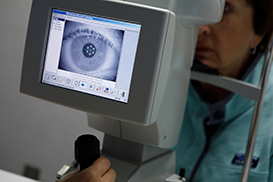What Are The Symptoms Of Asthma Attack And How To Treat It
An asthma attack is also known as asthma exacerbation. During this condition, your airways become inflamed and swollen. Muscles present around the airways start contracting and your airways produce an additional amount of mucus.
It makes your bronchial or breathing tubes narrow. People may have issues breathing, cough, and wheezing when they get an asthma attack. A careful and better treatment at home helps to reduce the symptoms of asthma.
Do not try to handle a severe attack of asthma at your home. The reason is that it is unable to be treated at home and can prove life-threatening for an individual. Identifying the flare-up of asthma to treat is the main step that plays an important role in treating your asthma attack.
Work out with an allergy or asthma specialist and follow your treatment plan to get a quick recovery. The treatment plan should have guidelines about important steps to do when getting an asthma attack or when it starts getting worse.
Symptoms
Symptoms of an asthma attack include pain and tightness in the area of the chest, wheezing, and breath shortness. People may have certain symptoms that fail to respond to their inhalers.
Work with allergy and asthma specialists to identify certain symptoms that make your asthma worse. Your doctor will provide you with guidelines about what to do when symptoms get worse. Moreover, you need emergency care if medicines fail to relieve your symptoms.
You need to book an appointment with your doctor if your asthma starts flaring up. Follow all the important steps of treatment and work with your doctor to make it better. You may need home treatment if your asthma symptoms and peak expiratory flow reading are enhanced.
But if home treatment is not helping you then consult a doctor or get emergency medical care. Follow the written plan for asthma provided to you when your asthma flares up. Take the medicines regularly that your doctor has prescribed.
Treatment
If you have worked with your doctor in setting a treatment plan for asthma, try to follow its all directions when you get the first symptom of an asthma attack. It generally means quickly taking two to six puffs of your inhaler in order to get airway-expanding medication.
There are different inhalers that doctors recommend to people. These inhalers include Proventil HFA, levalbuterol, and Ventolin. People who have issues with inhalers can use nebulizers. Doctors can also prescribe nebulizers to children of small age to relieve symptoms of asthma.
Visit your doctor if you are continuously getting breathing issues after your treatment. Use rescue medications if you are getting the symptoms of a severe asthma attack. Moreover, you can visit the doctor’s office or take urgent care.
Emergency Treatment
You require medications in order to control your asthma attack if you are going to the emergency room to take help for an asthma attack that is in progress. Following are the medicines that you may need.
Short-Acting Beta Agonists
Your doctor may prescribe you certain short-acting beta-agonists like albuterol. These medications are similar to quick-acting inhalers. An individual may require a machine called a nebulizer. It helps to change medication into a mist.
Now, you can easily inhale these medications into the lungs. Do not ignore the symptoms of a severe asthma attack and take emergency medical care. Carelessness can lead to serious and irreversible consequences.
Oral Corticosteroids
People take these medications in the form of pills. They help to decrease the inflammation in the area of the lungs. These medications help you to control your symptoms of asthma. A doctor can give you a corticosteroid intravenously if you suffer the issue of vomiting.
Ipratropium
Sometimes people use it as a bronchodilator in order to treat a complicated asthma attack. Your doctor may prescribe you ipratropium if albuterol is not proving effective.
The doctor recommends you still stay in the emergency room even after the improvement of symptoms. Your doctor makes sure that you do not have any symptoms of an asthma attack now. When he feels that your asthma is now under control, he allows you to go home.
The doctor provides you with important instructions about what to do if you will have another asthma attack at home. Follow all the precautionary measures in order to recover and get fewer symptoms of asthma.







